In this article, I will tell you about, What is Diabetes? Types of diabetes, Diabetes is cure able? food, Diagnosis, Treatment
WHAT IS DIABETES? TYPES OF DIABETES, ITS CAUSES, SYMPTOMS, IS CUREABLE? WHAT FOOD FOR DIABETES? TREATMENT:
- DIABETES DEF:
- TYPES OF DIABETES
- CAUSES OF TYPES
- SYMPTOMS OF DIABETES
- DIABETES IS CUREABLE?
- GLUCOSE LEVELS NORMAL/HIGH
- LOW DIABETES ?
- WHAT FOOD FOR DIABETES?
- DIAGNOSIS FOR DIABETES
- TREATMENT OF DIABETES
1- Diabetes is a condition that occurs when your blood glucose, also called blood sugar, is too high. Blood glucose is your main source of energy and it comes from the food you eat. Insulin, a hormone produced by pancreas, helps glucose in food to enter your cells for energy. Sometimes your body does not make enough insulin - or some - or does not use insulin properly. Glucose then stays in your blood and does not reach your cells.
Diabetes is a chronic (long-term) condition that affects the way your body converts food into energy.
2- Most of your diet is broken down by sugar (also called glucose) and released into your bloodstream. As your blood sugar rises, it shows your pancreas to release insulin. Insulin acts as a key to allow blood sugar to enter your body's cells for use as energy.
If you have diabetes, your body does not produce enough insulin or you cannot use insulin. When there is not enough insulin or cells stop responding to insulin, too much blood sugar stays in your blood. Over time, that can lead to serious health problems, such as heart disease, blurred vision, and kidney disease.
There is currently no cure for diabetes, but losing weight, eating a healthy diet, and working out can be really helpful. Taking medication as needed, getting diabetes and self-control education, and keeping track of health care can also reduce the impact of diabetes on your health.
TYPES OF DIABETES :
Type 1 Diabetes:
Type 2 Diabetes:
Type 1 and type 2 diabetes are the two most common types of diabetes.
CAUSES OF BOTH TYPES DIABETES:
Type 1 diabetes is caused:
By the immune system destroying cells that make up insulin cells. This causes diabetes by leaving the body without enough insulin to function normally.
This is called an autoimmune reaction, or autoimmune cause, because the body attacks itself
There are no specific causes for diabetes, but the following causes may be involved:
- Infection with a virus or a virus
- Chemical chemicals inside food
- An unknown factor that triggers an automatic reaction
- It is a genetic condition and can be type 1 diabetes.
Causes of type 2 diabetes:
Are usually caused by a number of factors - more than one cause of diabetes. Often, the most impressive thing about a family history of type 2 diabetes.
This is a condition of diabetes that is more likely to be diagnosed.
There are a variety of risk factors for type 2 diabetes, any or all of them that increase the risk of developing the condition.
These include:
- Obesity
- Living a sedentary life
- Growth of years
- Bad food
Another type of diabetes that causes pregnancy or illness can be the risk of type 2 diabetes.
Pregnancy diabetes causes:
- Family history of gestational diabetes
- You are either overweight or obese
- She has polycystic ovary syndrome
- She has a big baby weighing more than 9lb
Causes of gestational diabetes can also be related to race - some races have a higher risk of gestational diabetes.
Other Causes Of Diabetes:
There are many different causes of diabetes. These include the following:
Pancreatitis or pancreatectomy as a cause of diabetes. Pancreatitis is known to increase the risk of developing diabetes, such as pancreatectomy.
Polycystic Ovary Syndrome (PCOS). One of the main causes of PCOS is resistance to obesity-related obesity, which can also increase the risk of pre-diabetes and type 2 diabetes.
Cushing’s syndrome. This disease increases the production of the hormone cortisol, which works at blood glucose levels Excessive cortisol levels can cause diabetes.
Glucagonoma. Patients with glucagonoma may develop diabetes due to a lack of balance between insulin production and glucagon production.
Steroid-induced diabetes mellitus (diabetes mellitus) is a rare form of diabetes that occurs as a result of long-term use of glucocorticoid therapy.
Genetic Mutations:
Monogenic diabetes is caused by mutations, or mutations, in one type. These mutations are usually passed on to families, but in some cases genetic mutations do their job. Many of these genes cause diabetes by making the pancreas less able to produce insulin. The most common types of monogenic diabetes are newborn diabetes and adolescent diabetes mellitus (MODY). Maternal diabetes occurs in the first six months of life. Doctors often diagnose MODY during adolescence or adulthood, but sometimes the disease is not diagnosed until later in life.
The external connective tissue of cystic fibrosis NIH produces dense mucus that causes pancreatic shock. This scar can prevent pancreas from making enough insulin.
Hemochromatosis causes the body to store too much iron. Left untreated, iron can enter and damage pancreas and other organs.
Hormonal Diseases:
Some hormonal disorders cause the body to produce too many hormones, sometimes for insulin resistance and diabetes.
- Cushing's syndrome occurs when the body produces too much cortisol — commonly called "stress hormone."
- Acromegaly occurs when the body produces too much growth hormone.
- Hyperthyroidism occurs when the thyroid gland produces too much thyroid hormone.
Damage Or Removal Of Pancreas:
Pancreatitis, pancreatic cancer, and trauma can all damage beta cells or impair insulin production, leading to diabetes. If the damaged pancreas is removed, diabetes will occur due to the loss of beta cells.
Medications:
Sometimes certain medications can damage beta cells or interfere with the way insulin works. This includes
- niacin, a type of vitamin B3
- certain types of drugs, also called water pills
- antidepressants
- psychiatric drugs
- antiretroviral drugs (HIV NIH external link)
- pentamidine, a drug used to treat a type of pneumonia external link
- glucocorticoids - drugs used to treat inflammation such as rheumatoid arthritis NIH external link, external link for asthma NIH, external link for lupus NIH and ulcerative colitis
- antidepressants, used to help stop the body from rejecting a transplanted organ
- Statements, which are drugs that lower LDL ("bad") cholesterol levels, can slightly increase your chances of developing diabetes
- However, statins help protect you from heart disease and stroke. For this reason, the strong benefits of taking statins outweigh the risk of developing diabetes.
If you are taking any of these medications and are worried about their side effects, talk to your doctor.
Symptoms of Type 1 Diabetes and Type 2 Diabetes:
For the most part, type 1 and type 2 diabetes share the same symptoms.
With that being said, there is a big important difference.
First, type 1 usually has a rapid onset, while type 2 diabetes may go slowly and go undiagnosed for years.
Here are some of the most common signs and symptoms of type 1 and type 2 diabetes:
- Feeling tired all the time
- Emotional changes
- Dry tongue, severe thirst of water.
- Hunger (even if you have just eaten)
- Dry mouth
- Blurred vision
- Weight loss and numbness in the hands and feet
- Weight changes
- Wounds heal slowly and disease
- Dry, itchy skin
- Sexual inactivity (men and women)
- You can also develop patches of dark skin, thick on the armpits, neck, and other areas where the skin wraps.
- Type 1, however, is different in that it can quickly lead to dangerous hyperglycemia (high blood sugar) if it is not balanced.
- This can lead to shortness of breath, confusion, loss of consciousness, coma and death.
- Usually, the only effective treatment at this stage is regular insulin injections.
1- "From now on there is no way to prevent or treat type 1 diabetes," "There is a lot of promising research, but it is still in the early stages." Some of these processes involve identifying cells in the immune system that trigger an autoimmune response. Other possibilities include the use of stem cells or pancreas transplants.
2- Another area of research is diet and its effects on both the preservation and retention of diabetes. A study published in March 2017 in the British Journal of Nutrition reported that following a vegetarian diet and a low-fat diet reduces a person's risk of developing type 2 diabetes. The results show that certain compounds found in meat, instead of certain proteins, increase the risk of type 2 diabetes. In addition to eating a healthy diet rich in plant nutrients, extensive research shows that exercise is important not only for weight control, but also for maintaining a healthy, positive outlook.
Diabetes affects your whole body. In order to effectively manage diabetes, you will need to take steps to keep dangerous substances under control and in a normal range, including:
3- Keep blood glucose levels as close as possible by following a diet plan, taking prescribed medications and increasing your activity level.
4- Keep your blood cholesterol (HDL and LDL levels) and triglyceride levels as close to normal levels as possible.
5- Control your blood pressure. Your blood pressure should not exceed 140/90 mmHg.
You have the keys to controlling your diabetes now:
- Eating a diet and following a healthy eating plan. Follow a Mediterranean diet (vegetables, whole grains, beans, fruits, healthy fats, low sugar) or a Dash diet. These foods are high in nutrients and fiber and are low in fat and calories. See a dietitian for help understanding nutrition and food planning.
- Exercise regularly. Try to exercise for at least 30 minutes most days of the week. Walk, swim or find a job you love.
- Weight loss if you are overweight. Work with your health care team to develop a weight loss program.
- Take medication and insulin, if prescribed, and follow closely the instructions on how and when to take them.
- Monitor your blood glucose levels at home.
- Maintain your appointments with your health care providers and complete laboratory tests as directed by your doctor.
- Quitting smoking (if you smoke).
- You have a lot of control - every day - in managing diabetes!
Having low blood glucose levels below normal range (usually less than 70 mg / DL) is called hypoglycemia. This is a sign that your body is producing that you need sugar.
Symptoms you may experience if you have hypoglycemia include:
- Weakness or trembling.
- Wet skin, sweating.
- Fast heartbeat.
- Dizziness.
- A sudden famine.
- Confusion.
- Pale skin.
- Numbness in the mouth or tongue.
- Anger, panic.
- Instability.
- Bad dreams, bad dreams, sleepless nights.
- Blurred vision.
- Headache, fainting.
- You may pass if your hypoglycemia is out of control.
What happens if my blood sugar level is too high?
- If you have too much glucose in your blood, you have a condition called hyperglycemia. Hyperglycemia is defined as:
- Blood sugar levels above 125 mg / DL while fasting (no food or drink for at least eight hours).
- Blood sugar levels above 180 mg / DL one to two hours after meals.
NORMAL DIABETES UNITS:
- Before meals: between 80 and 130 mg / dl.
- About two hours after the start of the meal: less than 180 mg /dl
1- Diabetes is diagnosed and managed by checking your glucose level in a blood test. There are three tests that can measure your blood glucose level: fasting glucose test, random glucose test and A1c test.
2- Fasting plasma glucose test: This test is best done in the morning after an eight hour fast (nothing to eat or drink except sips of water).
Random plasma glucose test: This test can be done any time without the need to fast.
3- A1c test: This test, also called HbA1C or glycated hemoglobin test, provides your average blood glucose level over the past two to three months. This test measures the amount of glucose attached to hemoglobin, the protein in your red blood cells that carries oxygen. You don’t need to fast before this test.
4- Oral glucose tolerance test: In this test, blood glucose level is first measured after an overnight fast. Then you drink a sugary drink. Your blood glucose level is then checked at hours one, two and three.
FOOD FOR DIABETES:
1-FATTY FISH:
Fatty fish contain omega-3 fats that help reduce inflammation and other risk factors for heart disease and stroke. Also, it is a good source of protein, essential for controlling blood sugar.
2- LEAFY GREEN:
Vegetables are rich in nutrients such as Vitamin C, as well as antioxidants that protect your heart and eye health and diabetes.
3- AVOCADOS:
Avocados have less than 1 sugar and are associated with improved food quality. Avocados may have areas for diabetes prevention.
4- YOGURT:
Yogurt raises healthy blood sugar levels, reduces the risk factors for heart disease and can help with weight management.
5- CHIA SEEDS:
Chia seeds contain a high amount of fiber, which can help you lose weight. They also help maintain blood sugar levels.
6- NUTS:
Almonds: 2.6 grams
Brazilian Nuts: 1.4 grams
Shares: 7.7 grams
Hazelnuts: 2 grams
Macadamia: 1.5 grams
Pecans: 1.2 grams
Pistachios: 5 grams
Walnuts: 2 grams
Nuts were a healthy addition to a balanced diet. They are high in fiber and help lower blood sugar and LDL (bad) cholesterol levels.
7- EXTRA VIRGIN OLIVE OIL:
Non-virgin olive oil contains healthy oleic acid. It has benefits for blood pressure, heart health and perfect for diabetic patients.
BEST TREATMENT FOR DIABETES IN HOMOEOPATHY:
1- Syzygium Mother Jambolanum Tincture:
This remedy shows a quick effect on elevated sugar levels. This is a very common remedy shown for high blood sugar levels. Often, the symptoms associated with this condition are excruciating heat in the upper part of the body causing severe itching and small red pimples such as rashes, constant urge to urinate, severe thirst and general weakness. This tool has also been shown to diabetics who have developed sores on the skin. This tool can be taken in the form of tincture - 15 drops in a cup of water twice a day.
2- Helonias:
It has been shown in diabetic patients who suffer from frequent urination. The color of the urine is very white and clear due to the excess of albumin in the urine. Mentally, these patients have very poor memory, are very depressed and depressed. They are easily offended people who cannot bear the slightest argument. They are always better when they are kept busy doing something or when the mind is active. This remedy works best when taken in the 30c form.
3- Iodum:
This remedy is indicated for people with diabetes who are extremely hungry and hungry but still thin. Mentally, these patients have a tendency to be anxious, where they are so anxious that they cannot keep quiet. Therefore, they continue to walk or walk but are extremely tired of walking and sweating profusely from low light. This remedy can be taken as low as 6, 12 or 30c.
4- Cephalandra Indica :
This remedy has been scientifically proven to reduce and maintain blood sugar levels and to treat symptoms related to diabetes. It is shown in people with diabetes who have suffered from excruciating pain throughout the body with excessive urination.
It is a very effective remedy for skin complaints associated with diabetes such as abscess and carbuncle. It is also effective in dealing with frequent urination and diabetic thirst, in which patients feel weak and tired after the urination.
This remedy is proven to be effective in treating diabetes-related problems such as fever in the legs, muscle spasms, etc. It can be taken in the form of maternal tincture, 15 drops twice a day in half a cup of water for one to two months in a row. This can be taken with allopathic medicine. However, it is recommended that you keep a check on your blood sugar levels and lower the dose of allopathic medicines as needed.
5- Uranium nitricum :
This remedy works best when a patient has diabetes and stomach problems together. This is an excellent remedy for increased urination, increased appetite, excessive thirst and nausea, vomiting, stomach upset due to stomach ulcers. This leads to a significant reduction, weakness and tendency to ascites. This remedy can be taken in 3x or 6x form.
Always use homoeopathy medicines after complete body symptoms and doctor's advise.)
Please know that it is best to consult your doctor whenever you are taking homeopathic remedies and allopathic medicines as you may experience a drop in blood sugar levels. Do not stop allopathic remedies or Insulin injections without consulting your doctor.
Thanks for reviewing my Diabetes Article, for more health related information visit my channel:


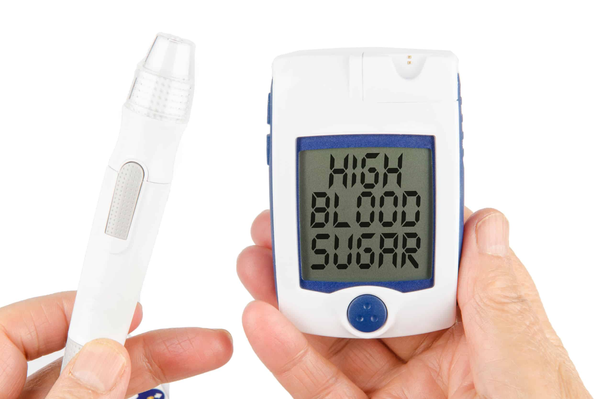

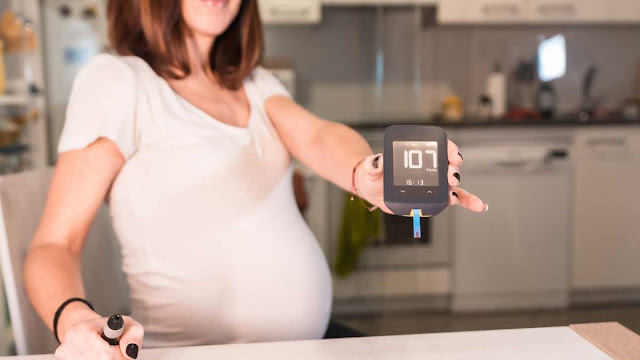
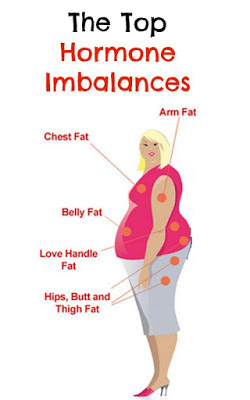
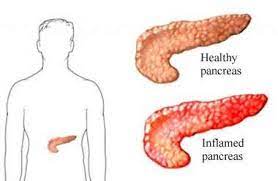
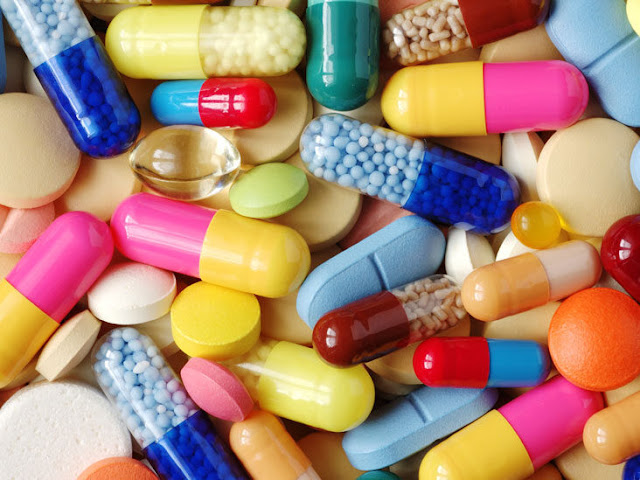











1 Comments
👍👍👍👍
ReplyDelete